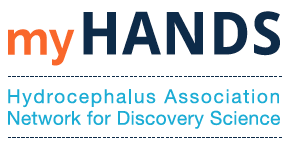2021 HANDS Animal Model Webinar Series
The Hydrocephalus Association would like to invite you to the 2021 HANDS Webinar Series. The focus of this multiday series will be on new animal models being used in research. For more details on the Animal Model Webinar Series and how to register, please refer to the information below. Join us to learn about the benefits and drawbacks of various models being implemented in current research.
Please register for each week.
If you would like to watch recordings of past webinars, please become a HANDS member! Then, you can access the recordings here.
[/av_textblock]
[/av_one_full]
[av_hr class=’default’ height=’50’ shadow=’no-shadow’ position=’center’ custom_border=’av-border-thin’ custom_width=’50px’ custom_border_color=” custom_margin_top=’30px’ custom_margin_bottom=’30px’ icon_select=’yes’ custom_icon_color=” icon=’ue808′ av-desktop-hide=” av-medium-hide=” av-small-hide=” av-mini-hide=” av_uid=’av-hj8nmq’]
[av_one_full first min_height=” vertical_alignment=” space=” custom_margin=” margin=’0px’ row_boxshadow=” row_boxshadow_color=” row_boxshadow_width=’10’ link=” linktarget=” link_hover=” padding=’0px’ highlight=” highlight_size=” border=” border_color=” radius=’0px’ column_boxshadow=” column_boxshadow_color=” column_boxshadow_width=’10’ background=’bg_color’ background_color=” background_gradient_color1=” background_gradient_color2=” background_gradient_direction=’vertical’ src=” background_position=’top left’ background_repeat=’no-repeat’ animation=” mobile_breaking=” mobile_display=” av_uid=’av-g9a7g2′]
[av_textblock size=” font_color=” color=” av-medium-font-size=” av-small-font-size=” av-mini-font-size=” av_uid=’av-krmdbojt’ custom_class=’ ‘ admin_preview_bg=”]
Week 1: Congenital Genetic Animal Models
Date: Friday, September 17th
Speakers:
- Engin Deniz (Yale University) – Applications of frog (Xenopus tropicalis) model of congenital hydrocephalus
- June Goto (Cincinnati Children’s Hospital Medical Center) – Ccdc39 mutant mice developing motile cilia defects, neuroinflammation, and severe neonatal hydrocephalus
- Scott Emmert (Cincinnati Children’s Hospital Medical Center) – Mouse and rat models of neonatal hydrocephalus with mutations (Ccdc39 and L1cam) using CRISPR/Cas9
[/av_textblock]
[/av_one_full]
[av_hr class=’default’ height=’50’ shadow=’no-shadow’ position=’center’ custom_border=’av-border-thin’ custom_width=’50px’ custom_border_color=” custom_margin_top=’30px’ custom_margin_bottom=’30px’ icon_select=’yes’ custom_icon_color=” icon=’ue808′ av-desktop-hide=” av-medium-hide=” av-small-hide=” av-mini-hide=” av_uid=’av-dus4yq’]
[av_one_full first min_height=” vertical_alignment=” space=” custom_margin=” margin=’0px’ row_boxshadow=” row_boxshadow_color=” row_boxshadow_width=’10’ link=” linktarget=” link_hover=” padding=’0px’ highlight=” highlight_size=” border=” border_color=” radius=’0px’ column_boxshadow=” column_boxshadow_color=” column_boxshadow_width=’10’ background=’bg_color’ background_color=” background_gradient_color1=” background_gradient_color2=” background_gradient_direction=’vertical’ src=” background_position=’top left’ background_repeat=’no-repeat’ animation=” mobile_breaking=” mobile_display=” av_uid=’av-c642f6′]
[av_textblock size=” font_color=” color=” av-medium-font-size=” av-small-font-size=” av-mini-font-size=” av_uid=’av-krmdkfhj’ custom_class=” admin_preview_bg=”]
Week 2: Adult Animal Models
Date: Friday, September 24th
Speakers:
- Sravanthi Koduri (University of Michigan) – Injection of cerebrospinal fluid from patients with aneurysmal subarachnoid hemorrhages (aSAH) into mouse ventricles for hydrocephalus induction
- Margaret Tish (University of Iowa) – Induction of chronic, communicating hydrocephalus in adult mice using kaolin
[/av_textblock]
[/av_one_full]
[av_hr class=’default’ height=’50’ shadow=’no-shadow’ position=’center’ custom_border=’av-border-thin’ custom_width=’50px’ custom_border_color=” custom_margin_top=’30px’ custom_margin_bottom=’30px’ icon_select=’yes’ custom_icon_color=” icon=’ue808′ av-desktop-hide=” av-medium-hide=” av-small-hide=” av-mini-hide=” av_uid=’av-ae1eaq’]
[av_one_full first min_height=” vertical_alignment=” space=” custom_margin=” margin=’0px’ row_boxshadow=” row_boxshadow_color=” row_boxshadow_width=’10’ link=” linktarget=” link_hover=” padding=’0px’ highlight=” highlight_size=” border=” border_color=” radius=’0px’ column_boxshadow=” column_boxshadow_color=” column_boxshadow_width=’10’ background=’bg_color’ background_color=” background_gradient_color1=” background_gradient_color2=” background_gradient_direction=’vertical’ src=” background_position=’top left’ background_repeat=’no-repeat’ animation=” mobile_breaking=” mobile_display=” av_uid=’av-8kx05e’]
[av_textblock size=” font_color=” color=” av-medium-font-size=” av-small-font-size=” av-mini-font-size=” av_uid=’av-krmdqyzr’ custom_class=” admin_preview_bg=”]
Week 3: Large Animal Models
(note different day/time)
Date: Thursday, October 14th
Speakers:
- Simon Malpas (University of Auckland) – Development of sheep models for measuring intracranial pressure, blood pressure, and sympathetic activity in conscious animals
- Pat McAllister (Washington University in St. Louis) – Development of pig models for shunting and third ventriculostomy with choroid plexus cauterization (ETV-CPC)
[/av_textblock]
[/av_one_full]
[av_hr class=’default’ height=’50’ shadow=’no-shadow’ position=’center’ custom_border=’av-border-thin’ custom_width=’50px’ custom_border_color=” custom_margin_top=’30px’ custom_margin_bottom=’30px’ icon_select=’yes’ custom_icon_color=” icon=’ue808′ av-desktop-hide=” av-medium-hide=” av-small-hide=” av-mini-hide=” av_uid=’av-7pvgo2′]
[av_one_full first min_height=” vertical_alignment=” space=” custom_margin=” margin=’0px’ row_boxshadow=” row_boxshadow_color=” row_boxshadow_width=’10’ link=” linktarget=” link_hover=” padding=’0px’ highlight=” highlight_size=” border=” border_color=” radius=’0px’ column_boxshadow=” column_boxshadow_color=” column_boxshadow_width=’10’ background=’bg_color’ background_color=” background_gradient_color1=” background_gradient_color2=” background_gradient_direction=’vertical’ src=” background_position=’top left’ background_repeat=’no-repeat’ animation=” mobile_breaking=” mobile_display=” av_uid=’av-6i7yle’]
[av_textblock size=” font_color=” color=” av-medium-font-size=” av-small-font-size=” av-mini-font-size=” av_uid=’av-krmdvc1a’ custom_class=” admin_preview_bg=”]
Week 4: Congenital Genetic Animal Models
Date: Friday, October 22nd
Speakers:
- Ryan Gray (University of Texas at Austin) – K1F6 mutant mice models demonstrating progressive loss of ependymal cell cilia and hydrocephalus development
- Bernadette Holdener (Stony Brook University) – B3glct mutant mice models demonstrating development of hydrocephalus and ventriculomegaly
[/av_textblock]
[/av_one_full]
[av_hr class=’default’ height=’50’ shadow=’no-shadow’ position=’center’ custom_border=’av-border-thin’ custom_width=’50px’ custom_border_color=” custom_margin_top=’30px’ custom_margin_bottom=’30px’ icon_select=’yes’ custom_icon_color=” icon=’ue808′ av-desktop-hide=” av-medium-hide=” av-small-hide=” av-mini-hide=” av_uid=’av-4n9c6q’]
[av_one_full first min_height=” vertical_alignment=” space=” custom_margin=” margin=’0px’ row_boxshadow=” row_boxshadow_color=” row_boxshadow_width=’10’ link=” linktarget=” link_hover=” padding=’0px’ highlight=” highlight_size=” border=” border_color=” radius=’0px’ column_boxshadow=” column_boxshadow_color=” column_boxshadow_width=’10’ background=’bg_color’ background_color=” background_gradient_color1=” background_gradient_color2=” background_gradient_direction=’vertical’ src=” background_position=’top left’ background_repeat=’no-repeat’ animation=” mobile_breaking=” mobile_display=” av_uid=’av-2b6xki’]
[av_textblock textblock_styling_align=” textblock_styling=” textblock_styling_gap=” textblock_styling_mobile=” size=” av-medium-font-size=” av-small-font-size=” av-mini-font-size=” font_color=” color=” id=” custom_class=” template_class=” av_uid=’av-krmdyoyz’ sc_version=’1.0′ admin_preview_bg=”]
Week 5: Posthemorrhagic Animal Models
Date: Friday, October 29th
Speakers:
- Lauren Jantzie & Dody Robinson (Johns Hopkins Medicine) – Rat model of hydrocephalus via induction of chorioamnionitis (in utero inflammation) and ICV injection of lysed littermate red blood cells postnatally
- Jennifer Strahle (Washington University School of Medicine in St. Louis) – Mouse model of posthemorrhagic hydrocephalus using the injection of blood products
[/av_textblock]
[/av_one_full]

